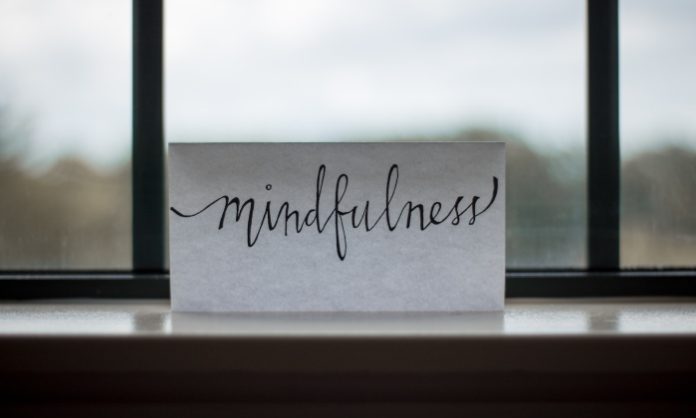In today’s world there are so many distractions that occur, and we are ill prepared to deal with them. This is because our minds are cluttered with important information along with useless junk. The mind is just like a computer. In fact, it is the most impressive computer ever created. However, we do a better job a maintaining a personal computer while the mind is neglected. If we do not clear out the junk in our minds, then like pcs the mind will not be able to function at the level required to live the abundant life God promised for all of us. God wants each of us to live in a state of mindfulness. *Mindfulness is a mental state achieved by focusing one’s awareness on the present moment, while calmly acknowledging and accepting one’s feelings, thoughts, and bodily sensations, used as a therapeutic technique. This means, living a life in total awareness of the world around us, so that we (under the Holy Spirit’s influence) are acutely engaged in the moment and not just emotionally handcuffed by it.
To that effect, let us explore some mental exercises to achieve mindfulness into our lives. My favorite mental exercise is what I call the “healthy blank mind”. We need to get comfortable with the idea with sitting around with no thoughts at all. Just sit still for 15 – 45 minutes and stare out of a window or do this at a park. During this time, allow your mind to wonder whimsically only at what you see. The blank mind brings no preconceived thoughts with it. Just look out at the life around you. As the people, sounds and movements happen observe them in the moment. Do not ascribe a label to anything. Just take it in and then dismiss it. If you see someone who is experiencing an emotion, such as laughing, happiness, excitement, or sorrow, do not judge them. No matter what you may want to believe. Just reach out to them prayerfully. This is a process called “inward direct words”. This is where you prayerfully say the following, toward that person: “May you be happy. May you be free from pain and suffering. May you experience love and joy.” Granted, if you see someone in an emergency, please directly try to assist them.
The goal is to practice viewing everything as it is. This will allow you to apply it in your daily life as situations, responsibilities and relationships take hold of you. Instead of responding with the history of feelings already stored up within you, process moments as they are. This will lead to healthier fresher experiences. In his groundbreaking books, American professor of medicine Jon Kabat-Zinn describes seven attitudes that are important for cultivating mindfulness:
- Non-judging – letting each moment be just what it is without labelling it as “good” or “bad”
- Patience – letting your life unfold in its own time and way
- Beginner’s mind – seeing everything as if for the first time
- Trust – feeling confident about your ability to learn from observing your experience
- Non-striving – backing off from striving for results
- Acceptance – seeing things as they are in the present, moment by moment
- Letting go – putting aside the tendency to cling to some experiences and reject others
The biggest challenge one faces with achieving mindfulness is the active thoughts that dance throughout the mind. The goal is to assess thoughts as unexpected new visitors. The “visitors” are welcomed. However, you are not aware of why they are there. Therefore, you want to receive them graciously while maintaining a spirit of discernment as to why they have arrived, unannounced. This is especially important for believers. The are times when thoughts are goading by the Holy Spirit. Sometimes we receive those thoughts and outright reject it too soon. We need to allow discernment and patience to reveal what the Holy Spirt wants us to do or to explore a person/situation/area more deeply. Many blessings are missed when we are not mindful. Start today, the mindfulness techniques discussed so that when opportunities arise, you are ready to capture it. This is the spirit we are asked to maintain as children of God. Fortunately, the Parakletos, Holy Spirt is ever present within us to assist in this process.
Be encouraged.
Resources
Jon Kabat-Zinn introduced mindfulness into healthcare at the University of Massachusetts Medical Centre in 1979. The Mindfulness-Based Stress Reduction program he started has benefited thousands of people. Kabat-Zinn’s books continue to be some of the most helpful for anyone wanting to learn about mindfulness.
- Full Catastrophe Living: Using the Wisdom of Your Body and Mind to Face Stress, Pain, and Illness is a bestseller that captures the essence of his teaching and program. CDs with the book’s guided meditations are also available
- Wherever You Go There You Are: Mindfulness Meditation in Everyday Life is a helpful guide for both the beginner and the long-time practitioner.
- Mindfulness for Beginners comes with a CD that includes five guided mindfulness meditations.
Retrieved from: Christian Leaders Institute
*Mindful Definition (n.d.). Retrieved November 07, 2020, from Google
Readers Might Also Like:
 Cuffing Season Isn’t Cancelled! Your Guide To Cuffin’ In a Pandemic
Cuffing Season Isn’t Cancelled! Your Guide To Cuffin’ In a Pandemic
It’s Not You Ladies – The Truth About Men, Mid-Twenties & Relationships
 Natural Hairstyles If You’re Looking To Switch your Style Up
Natural Hairstyles If You’re Looking To Switch your Style Up


